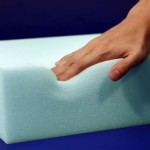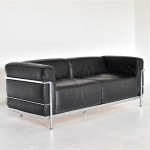How to Effectively Clean Cat Urine from Your Sofa
Cat urine accidents on sofas are a common problem for cat owners. The unpleasant odor and potential for permanent staining can make it a frustrating experience. Successfully removing cat urine requires prompt action and the correct cleaning techniques. This article provides a comprehensive guide to effectively clean cat urine from various types of sofa materials, preventing lingering odors and minimizing damage.
Immediate Action is Crucial
The key to successful cat urine removal lies in immediate action. The longer the urine remains on the sofa, the deeper it penetrates the fibers, making it more difficult to remove and increasing the risk of permanent staining and odor retention. As soon as an accident is discovered, begin the cleaning process. The first step involves absorbing as much of the urine as possible.
Begin by blotting the affected area with clean, absorbent materials like paper towels or clean cloths. Press firmly and repeatedly to absorb the urine. Avoid rubbing, as this can spread the urine and force it deeper into the sofa fibers. Continue blotting until the area is as dry as possible. Dispose of soiled materials properly and avoid reusing them on other surfaces.
After blotting, consider using a wet/dry vacuum cleaner to further extract the remaining urine. Ensure the vacuum cleaner is specifically designed for wet extraction and follow the manufacturer's instructions. Use a low setting to prevent damage to the sofa fabric. If you don't have a wet/dry vacuum, continue blotting with clean materials until no more urine can be absorbed.
Choosing the Right Cleaning Solution
Selecting the appropriate cleaning solution is critical for effective urine removal and odor neutralization. While numerous commercial products are available, certain homemade solutions can also be effective. However, it's crucial to test any cleaning solution on an inconspicuous area of the sofa before applying it to the affected area. This will help ensure the solution doesn't damage or discolor the fabric.
Enzyme-based cleaners are generally considered the most effective option for removing cat urine. These cleaners contain enzymes that break down the uric acid crystals found in cat urine, which are responsible for the persistent odor. Look for enzyme-based cleaners specifically designed for pet urine removal. Follow the product instructions carefully, as application and dwell times may vary.
Homemade cleaning solutions can also be effective if used correctly. A common and effective mixture involves combining equal parts white vinegar and water. White vinegar is a natural disinfectant and odor neutralizer. Another option is to create a paste of baking soda and water. Baking soda is a natural absorbent that can help draw out odors and moisture.
Avoid using cleaning solutions that contain ammonia, as ammonia is a component of cat urine and may actually attract the cat back to the same spot. Also, avoid using harsh chemicals or bleach, as these can damage or discolor the sofa fabric and may be harmful to pets and humans.
Testing the chosen cleaning solution is vital, regardless of whether it's a commercial product or a homemade mixture. Apply a small amount of the solution to a hidden area of the sofa, such as the back or underneath the cushions. Allow it to sit for the recommended dwell time and then blot it dry. Observe the area for any discoloration, damage, or changes in texture. If no adverse effects are observed, you can proceed with cleaning the affected area.
Applying the Cleaning Solution and Removing Odor
Once you've chosen the appropriate cleaning solution and tested it on an inconspicuous area, you can begin applying it to the affected area. Saturate the area thoroughly with the cleaning solution, ensuring it penetrates deep into the sofa fibers. For enzyme-based cleaners, follow the product instructions regarding application and dwell time. For homemade solutions, allow the solution to sit for at least 10-15 minutes.
After the dwell time, blot the area thoroughly with clean, absorbent materials. Again, avoid rubbing, as this can spread the urine and cleaning solution. Continue blotting until the area is as dry as possible. If using an enzyme-based cleaner, you may need to repeat the application and blotting process several times to ensure complete odor removal.
For particularly stubborn odors, consider using a wet/dry vacuum cleaner to extract the remaining cleaning solution. This can help remove any residual urine or cleaning solution that may be trapped deep within the sofa fibers. Follow the manufacturer's instructions for wet extraction and use a low setting to prevent damage to the fabric.
After blotting or using a wet/dry vacuum, sprinkle a generous amount of baking soda over the affected area. Baking soda is a natural absorbent that can help draw out any remaining odors and moisture. Allow the baking soda to sit on the sofa for several hours, or even overnight. The longer it sits, the more effective it will be at absorbing odors.
After the baking soda has sat for the desired amount of time, vacuum it up thoroughly using a standard vacuum cleaner. Ensure you remove all traces of baking soda from the sofa. If any odor persists, repeat the application of the cleaning solution and baking soda until the odor is completely eliminated.
Once the cleaning process is complete, allow the sofa to air dry completely. Avoid using heat, as this can set the stain and odor. Open windows and use fans to circulate air and speed up the drying process. Do not allow pets or children to access the area until it is completely dry.
For persistent odors or stains that are difficult to remove, consider consulting a professional upholstery cleaning service. These professionals have specialized equipment and cleaning solutions that can effectively remove even the most stubborn cat urine stains and odors. They can also provide advice on how to prevent future accidents.
To prevent future accidents, consider identifying the underlying cause of the cat's urination outside the litter box. This could be due to a medical condition, stress, or an aversion to the litter box. Consult with a veterinarian to rule out any medical issues. Ensure the litter box is clean, accessible, and located in a quiet, private area. Try different types of litter to see which your cat prefers. In some cases, adding an additional litter box can also help prevent accidents.
Regular cleaning of the sofa can also help prevent odors and stains from setting in. Vacuum the sofa regularly to remove pet hair and debris. Spot clean any spills or stains immediately. Consider using a fabric protector spray to help repel liquids and prevent stains. By taking these preventative measures, you can help keep your sofa clean and odor-free, even with a cat in the house.

How To Clean Dog Or Cat Urine From Couch Diy Guide Ep 11

How To Remove Cat Smell From A Couch 5 Quick Easy Tips Catster

3 Ways To Remove Cat Spray Or From A Leather Couch Wikihow

How To Get Cat Out Of Couch

How To Clean Off A Couch Easy Diy Solutions

How To Get Urine Out Of A Couch Remove Stains From The

How To Easily Get Rid Of That Cat Smell Forever Pet Junction Tips

Dealing With Cat Urine On Cushions Tips And Tricks

3 Ways To Remove Cat Spray Or From A Leather Couch Wikihow

How To Remove And Urine From Couch Works For Mattresses Too The Thrifty Couple








